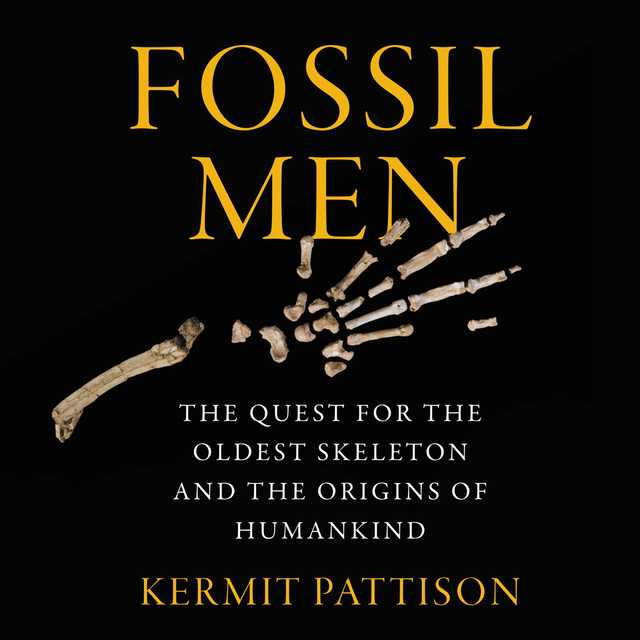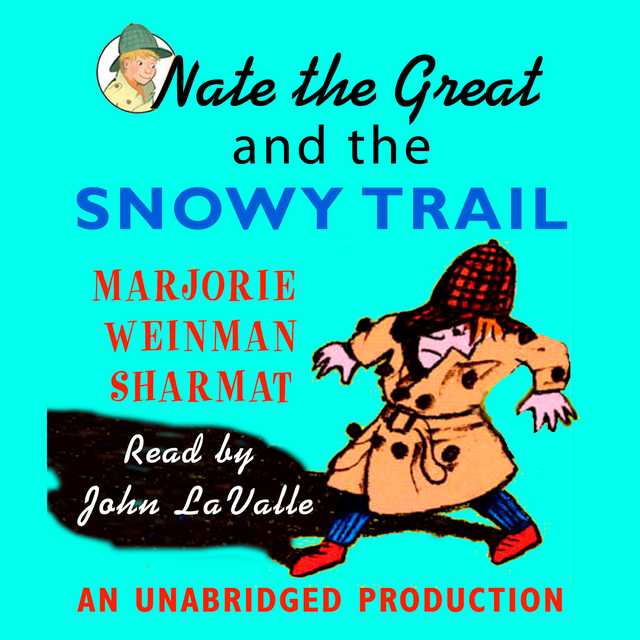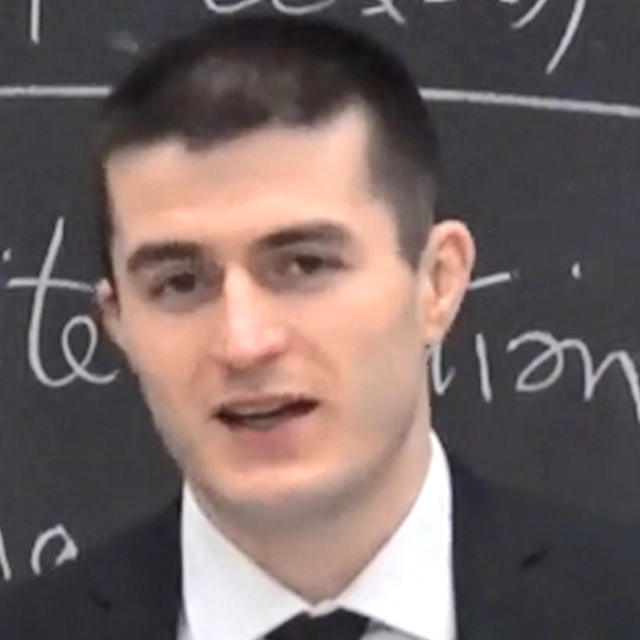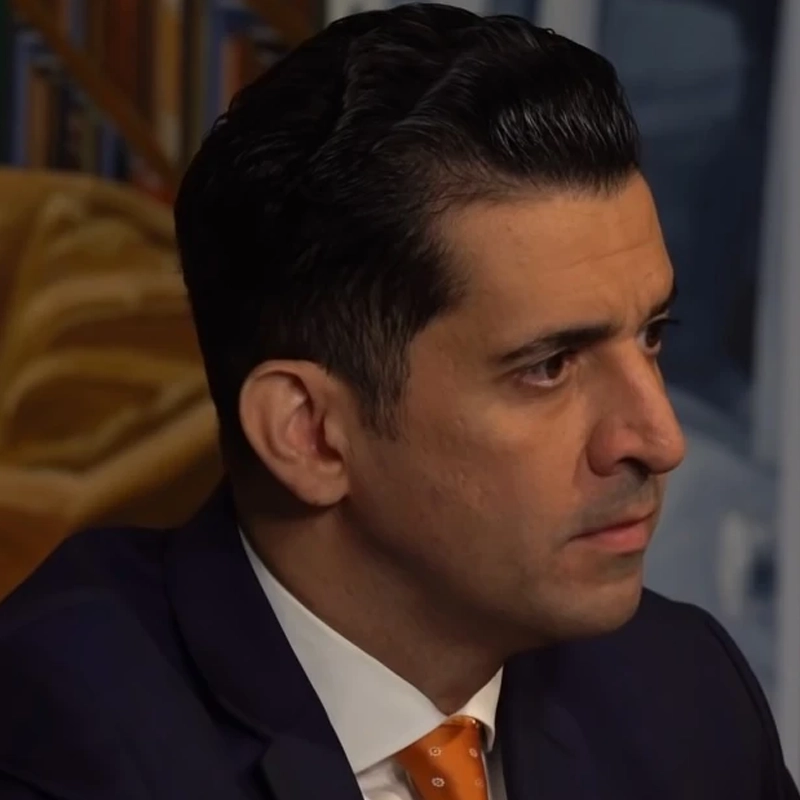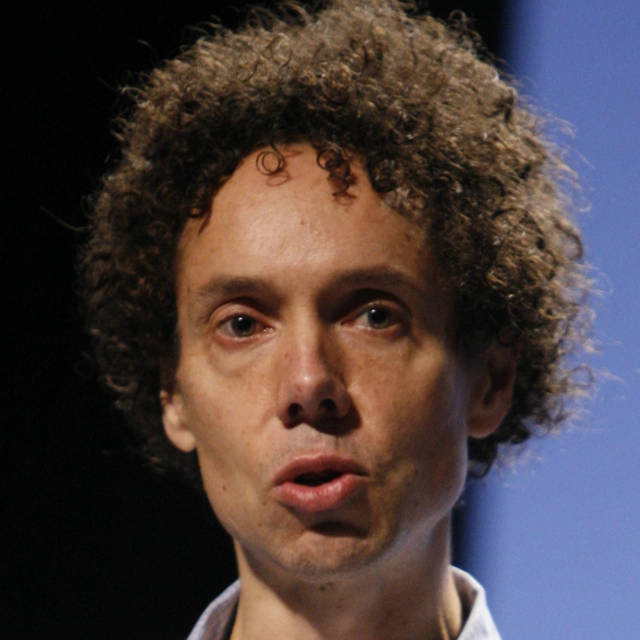Fossil Men Audiobook Summary
“A rip-roaring tale, Fossil Men is one of those rare books that can be a prism through which to view the world, exposing the fabric of the Earth and illuminating the Tree of Life.” —New York Times bestselling author Peter Nichols
A behind-the-scenes account of the shocking discovery of the skeleton of “Ardi,” a human ancestor far older than Lucy – a find that shook the world of paleoanthropology and radically altered our understanding of human evolution.
In 1994, a team led by fossil-hunting legend Tim White–“the Steve Jobs of paleoanthropology”–uncovered the bones of a human ancestor in Ethiopia’s Afar region. Radiometric dating of nearby rocks indicated the skeleton, classified as Ardipithecus ramidus, was 4.4 million years old, more than a million years older than “Lucy,” then the oldest known human ancestor. The findings challenged many assumptions about human evolution–how we started walking upright, how we evolved our nimble hands, and, most significantly, whether we were descended from an ancestor that resembled today’s chimpanzee–and repudiated a half-century of paleoanthropological orthodoxy.
Fossil Men is the first full-length exploration of Ardi, the fossil men who found her, and her impact on what we know about the origins of the human species. It is a scientific detective story played out in anatomy and the natural history of the human body. Kermit Pattison brings into focus a cast of eccentric, obsessive scientists, including one of the world’s greatest fossil hunters, Tim White–an exacting and unforgiving fossil hunter whose virtuoso skills in the field were matched only by his propensity for making enemies; Gen Suwa, a Japanese savant who sometimes didn’t bother going home at night to devote more hours to science; Owen Lovejoy, a onetime creationist-turned-paleoanthropologist; Berhane Asfaw, who survived imprisonment and torture to become Ethiopia’s most senior paleoanthropologist and who fought for African scientists to gain equal footing in the study of human origins; and the Leakeys, for decades the most famous family in paleoanthropology.
An intriguing tale of scientific discovery, obsession and rivalry that moves from the sun-baked desert of Africa and a nation caught in a brutal civil war, to modern high-tech labs and academic lecture halls, Fossil Men is popular science at its best, and a must read for fans of Jared Diamond, Richard Dawkins, and Edward O. Wilson.
Supplemental enhancement PDF accompanies the audiobook.
Other Top Audiobooks
Fossil Men Audiobook Narrator
Roger Wayne is the narrator of Fossil Men audiobook that was written by Kermit Pattison
Kermit Pattison is a journalist whose work has appeared in the New York Times, GQ, Fast Company, and Inc., among many other publications. He spent more a decade doing research for Fossil Men, a large portion of which was spent in the field in Ethiopia with the team that discovered Ardi. This is his first book. He lives in St. Paul, Minnesota.
About the Author(s) of Fossil Men
Kermit Pattison is the author of Fossil Men
More From the Same
- Publisher : HarperAudio
- Abraham
- American Gods [TV Tie-In]
- Dead Ringer
- House of Sand and Fog
- Prey
Fossil Men Full Details
| Narrator | Roger Wayne |
| Length | 15 hours 21 minutes |
| Author | Kermit Pattison |
| Category | |
| Publisher | HarperAudio |
| Release date | November 10, 2020 |
| ISBN | 9780062660039 |
Subjects
The publisher of the Fossil Men is HarperAudio. includes the following subjects: The BISAC Subject Code is Paleontology, Science
Additional info
The publisher of the Fossil Men is HarperAudio. The imprint is HarperAudio. It is supplied by HarperAudio. The ISBN-13 is 9780062660039.
Global Availability
This book is only available in the United States.
Goodreads Reviews
Jennifer ~ TarHeelReader
December 16, 2020
As I’ve mentioned in other reviews, one of my majors in undergrad was anthropology, and a nonfiction book covering the oldest human skeleton, as well as the “fossil hunters” involved in lifelong searches, is my cup of tea, especially when it’s this well-written and exciting. The drama present in the scientific community also kept me flipping the pages. 😂 Really, though, the heart of the book is the fossils and science involved, which the author tackled in a riveting and approachable way for the reader. Fossil Men is about the search for the beginning of our species, and it reads like one of those most compelling mysteries I’ve ever picked up!I received a gifted copy. Many of my reviews can also be found on my blog: www.jennifertarheelreader.com and instagram: www.instagram.com/tarheelreader
Jamie
September 01, 2021
This book tells an intriguing story of our distant ancestors, along with the evolving interpretations of which bones should be considered as members of our family tree. Our understanding has come a long way since the early visions of ape-men, and the story has taken some interesting twists and turns. Paleoanthropology is an exacting profession, with painstaking reconstructions that take years to complete. It is also more than science, it is interpretation and sometimes conjecture. At one point the author of this book makes a comment that could have come directly from Thomas S. Kuhn’s seminal 1962 book The Structure of Scientific Revolutions: “it was a classic clash of scientific worldviews. Science is not just a quest for new facts; it also is a contest between rival models for interpreting nature.”The idea of rivalry between scientists looms large in this book, sometimes overshadowing the science itself. It was done, no doubt, to add a human dimension to the story to make it more than just bones and analysis. Maybe these guys have been in the equitorial sun too long, but they seem to spend as much time bickering with each other as they do studying the fossils. Although the author never explicitly says so, I suspect he was fed up with them by the time he finished his research, because he recounts their quarrels in cringe-inducing detail, describing the pettiness, jealousy, and back-stabbing like a daytime soap opera.Make no mistake, these people are brilliant, insanely hardworking, and passionately devoted to advancing our knowledge of the origins of humankind. Their inductive abilities verge on the miraculous: at one point a cast of a partially exposed foot bone, the size of the little fingernail on one’s hand, was found to be a key piece of evidence in understanding how early hominins walked. And it’s not just hype that, to the right expert, a single tooth can reveal its owner’s place in the evolutionary line, along with its age, diet, and whether it was primarily arboreal or terrestrial. A tiny skull fragment can tell whether the species walked on two legs or four, and a bone the size of a small pebble was crucial for understanding whether one potential ancestor knuckle-walked or strode upright.Fossil Men wraps its story around the discovery of Ardipithecus and the long process by which it gradually came to be accepted by most paleoanthropologists as a member of the human lineage rather than one of the many species of ancient apes. The first bones were found in 1994, of a 4.4 million year old female. For comparison, the better-known Lucy is 3.2 million years old, and the more recent Homo naledi from South Africa is now dated at 236,000-335,000 years old, just about the time Homo sapiens was splitting off from Homo erectus.In Southern Africa fossils are often found in caves, but in East Africa where “Ardi” was discovered, they are found on the ground, in pieces, lots of tiny pieces that have been brought to the surface through erosion or ground faulting. Some of the fragmentation is the result of expansion and contraction as dry and wet seasons alternate, but much of the damage came from scavengers immediately after death. Animals fell where they died, and scavengers were quick to move in. “Feet are rare in the fossil record. Extremities are filled with tasty ligaments and muscles, like a handout for scavengers: eat me.”The book is also a good primer on what a field expedition is actually like. Even when not being menaced by the local natives, stone age warriors with automatic weapons, it is grueling work. Despite whatever romantic notions you might have about finding a key piece of evolutionary evidence, this is not a place most of us would want to be, spending all day in the dirt under a blazing sun. The work is always hard, often crawling uphill on all fours, and once a promising site is found, with the potential to yield more bone fragments, the precision becomes extreme:Millimeter by millimeter, the excavators reduced the mound with scrapers, dental tools, porcupine quills, and dust brushes. Each person spent an entire day picking away at a section not much bigger than a laptop computer. By sundown, they had gone down only one or two centimeters. All brushed soil was carried to a sieve station to catch every scrap.When people talk about the Last Common Ancestor of humans and chimpanzees, the word “ape-like” is often used, but one of the themes of this book is that Ardipithecus, with its mixture of ancient and modern features, shows that we need to reexamine that idea. “Suddenly the living African apes seemed outliers. Modern apes were not faithful relics of our common ancestors. Instead, they evolved into specialized creatures after their common ancestors with humans.” Ardi had the curved fingers and opposable big toes of apes, but walked upright, a creature neither fully arboreal not fully terrestrial. The old assumption was that our common ancestor knuckle-walked like modern chimpanzees, but perhaps an upright gait is actually the older trait. “Living apes differ greatly in social structures, limb proportions, and even styles of knuckle walking—all of which suggested they became highly specialized after splitting from our common ancestors.”Paleoanthropolgy is a fast-evolving discipline, and each new find can re-write the book on mankind’s ancestors. Jared Diamond published The Third Chimpanzee in 1991, describing human evolution in terms of what was known then. It is a fine book, but so much has changed since he wrote that it now feels as ancient as the bones it describes. Fossil Men is a good up to date account of the evidence as it stands today, but in another year or two it too may be made obsolete by new finds.
Ms.pegasus
May 20, 2021
Who were these people? The ones who lived in a world populated by animals whose fossils were displayed at the Los Angeles Museum of Natural History; the ones who fashioned the Native American relics his father brought home from a road excavation. Tim White was always traveling in his imagination back in time. As a teen he was fascinated by F. Clark Howell's Early Man, part of the Time-Life Nature Library series. Later, he would read about the Leakey discoveries from the pages of National Geographic. The illustration “March of Progress” depicting human evolution by Rudolph Zallinger from Early Man is still iconic. Simple. Intuitive. But wrong, just like most of what we thought we knew about human evolution from catchphrases like “the Missing Link” or later, “Mitochondrial Eve.” White was a key figure in shattering these paradigms. White led a succession of digs in the Afar Depression, the triangular area where three tectonic plates meet at the northeast tail of the Great Rift Valley. It's safe to assume he never said to himself: “Yes, I want to go to war-torn Ethiopia to a remote region plagued by intertribal warfare, venomous snakes, prowling jackals, unpredictable floods, and scalding summers to dig." What is remarkable is that he didn't care about any of this. He wanted to find the oldest human fossil, and the Afar Depression was the most promising location to find it. In 1994 his team struck paydirt. They unearthed a fossil 4.4 million years old. Up to that time, the oldest fossil was “Lucy” (Australopithecus afarensis), excavated two decades previously by Donald Johanson. “Lucy” was estimated to be 3.2 million years old. Eventually, White would conclude that his fossil “Ardi” represented a new genus which he called Ardipithecus ramidus. Her age alone was enticing. Human ancestry might one day be pushed back from the Pliocene (5.3 to 2.6 million years ago) all the way back to the Miocene (23 to 5.3 million years ago). More eye-opening, however, were the revelations that would take 15 years of careful study, conjecture, and confirmation before being openly published. Ardi's forelimbs were shorter than her legs. Her toes were opposable, consistent with a climber. The spine was upright indicating bipedal locomotion. Diamond-shaped canines that were not self-sharpening were characteristic of humans, not apes. Her habitat was unclear. Woodland? Savannah? Both? “The climate and botany of eastern Africa cycled back and forth in a very spiky fashion between wet periods when huge lakes formed in the rift valley, dry periods when dust collected on the coastal seafloor, and sometimes perplexingly both at the same time....The quest for a master narrative of climate-driven human evolution remains unfulfilled.” (p.220)The range of specialized expertise tapped to support these conclusions was staggering. Geology of the Ethiopian rift system and in particular of the Afar Depression (Giday WoldeGabriel, Berhane Asfaw, and Maurice Taieb), isotope decay geochronology and genomic biology (Stan Ambrose), paleoanatomy, comparative anatomy and biomechanics (Owen Lovejoy, Gen Suwa and Scott Simpson), foot anatomy (Bruce Latimer), paleolithic archaeology (Yonas Beyene), paleobotany, and comparative genomics. Instead of a “missing link,” some scientists now speak of “ghost lineages.” Geneticist David Reich states: “Within human populations, there is no simple tree....Instead, the truth is it's more like a trellis with mixing, remixing, and separation again and again going back into deep time.” (p.403)Tim White is an iconoclast. He was never cowed by those adhering to conventional wisdom or the criticisms of well-regarded colleagues. His impatience and lack of diplomacy ignited animosities which author Kermit Pattison felt obligated to detail along with opposing interpretations of White's find. The result is a balanced but often meandering narrative. Also interspersed are mini-biographies of the many researchers whom White worked with. Nevertheless, this was a thought-provoking and exhaustive update to the story of human evolution.
David
October 03, 2021
This fascinating book is about paleoanthropologist Tim White, and his team's discovery of Ardi--short for Ardipithecus ramidus. Tim White had a reputation--a pretty bad reputation, actually--of being a very blunt, salty, arrogant scientist. But he was the most learned, obsessive, meticulous, aggressive, and far-seeing scientist of his time. He really and truly "knew his stuff". Every year during the 1970's, 1980's, and 1990's, Tim White participated in or led an expedition to East Africa. At first he worked with Richard Leakey in Kenya, and then worked primarily in Ethiopia. He searched for fossils of early hominids; the ancestors of modern humans. This was not easy work. First, he had to obtain grant money to fund the expeditions and research. Then he had to go through a maze of bureaucrats in Ethiopia to get permission to search in a certain area. This could take months or even years, as Ethiopia went through political turmoil. Then, after finally getting all set up, he would take a caravan of vehicles on a several-day trip through the desert. He went through the homelands of various warring tribes, and sometimes had to dodge bullets and deal with gun-crazy people!White found the remains of Ardi, a 4.4-million year old set of fossils that predated the bones of "Lucy". He began studying the fossil remains for many years. He was meticulous, and documented every nuance and detail from his very incomplete collection of fossil bones. He deduced that Ardi was bipedal--she was an upright walker--even though she could also grab onto tree branches. White deduced from multiple clues, that modern humans are more closely related to Ardi than to modern apes. When he finally published his findings, the scientific community was aghast. They just did not believe White--they didn't want to believe him! The scientific community criticized White--perhaps just as much because of White's personality, as his paradigm-shifting views. It took many years for scientists to finally recognize how correct White had been. The book mentions the aphorism that "science advances when old professors die." In this case, it is probably true. The most interesting parts of the book, are those that describe the detective work that scientists performed, to discover the secrets of the origin of humans. It was also engaging to hear how expeditions faced danger and desert heat to uncover the tiny fossil fragments. I highly recommend this book!Oh--I did not read this book. I listened to the audiobook, narrated extremely well by Roger Wayne. He spoke so well that I could distinguish who was speaking, just from listening to his voice. What a delight!
Cindy
November 17, 2020
Fossil Men: The Quest for the Oldest Skeleton and the Origins of Humankind by Kermit Pattison: A group led by the renowned fossil-hunter Tim White discovered a skeleton in the Afar region of Ethiopia in the mid-1990’s that significantly altered scientists’ understanding of human origins, but simultaneously triggered a seismic rift in the scientific community over the true origins of humanity. Based on the radiometric dating of nearby rocks, the group determined that the bones were 4.4 million years old, making Ardi (as they nicknamed the bones) a full million years older than “Lucy”, the previous oldest-known skeleton. In riveting detail, Pattison brings to life the discovery and the resulting drama in the scientific community and demonstrates the importance of science in helping human’s understand their origins.Listen to my author interviews here: https://www.thoughtsfromapage.com, and for more of my reviews, check out my Instagram account: https://www.instagram.com/thoughtsfro....
Kara
April 30, 2021
This is one of those books where I don’t remember how it came to be on my to-read list, but I’m glad it did. Fossil Men is a book about science and history—both subjects I adore in my non-fiction reading—in a somewhat niche subject of paleoanthropology. Indeed, I wouldn’t describe this as a “pop science” book, which is usually the type of scientific non-fiction I read. Kermit Pattison, while not himself a scientist, has spent so many years on his research for this subject that he ends up presenting a text that goes far deeper than most popular accounts. While still comprehensible to laypeople like myself, the more you know about theories of evolution, paleoanthropology, etc., then the more enticing this book will be for you. As it is, I really enjoyed learning more both about this scientific discipline and what it might be teaching us about our deep, deep past as a species.Fossil Men focuses mainly on the Middle Awash team of paleoanthropologists and related people—so named for the region of Ethiopia in which this team found the first fossils of Ardipithecus ramidus. This team, led by prickly paleoanthropologist Tim White, claimed that “Ardi” was the oldest ancestor of modern humans then discovered and indicated a link between modern humans and our more ancient ancestors, whom scientists until now assumed must be more similar to modern chimpanzees. The catch? The Middle Awash team found Ardi in 1994, yet they didn’t publish any major findings for fifteen years. Since then, the significance of Ardi and similar new fossil findings has been a subject of major dispute. What Pattison contends in this book is that these debates and controversies are, perhaps unsurprisingly, as much a result of clashing egos and human fallibility as they are a search for scientific truth. This, to me, was the main lure of Fossil Men (yeah, that’s right, I am a whore for that juicy science drama).Pattison organizes his account in roughly chronological detail. The exception is when he dives into the past for half a chapter or so in order to explore the history of particular people of note. I found this organizational method very easy to follow. Pattison carefully charts the relationships among the most famous and well-known fossil hunters, like Tim White and the various Leakeys, or White’s estranged protégé, Don Johanson. Moreover, he ties the people to places—most notably when discussing how successive periods of political unrest in Ethiopia made it impossible for foreign paleoanthropologists to dig and also threatened the lives and livelihood of Ethiopian paleoanthropologists.I appreciate that Pattison takes the time to highlight the colonial, Western domination of this field. For a scientific discipline depending on fossils that mostly come from Africa, the field is incredibly white (and male, something Pattison also points out). Pattison lauds White and a few others for opening doors, for making the training of Indigenous anthropologists part and parcel of their projects. And I like that, even as we learn of the oppressive and authoritarian actions of some of the Ethiopian regimes, Pattison reminds us that the country has every right to be suspicious of foreign scientists and officials extracting fossils and exploiting Ethiopia for such discoveries without giving back. In this way, Pattison touches on something that I think is well known within science but needs to be discussed far, far more often: the practice of science is racist and colonial, and we can’t justify continuing such practices in the name of “progress.” We need to rethink how we science, especially in the field, and who is doing the sciencing.If we are rethinking this, of course, then we should also probably think about personalities and policies. Pattison doesn’t just give us a window into evolutionary history—he also shows us how hiring and admissions policies at universities, along with grant policies for institutions like the National Science Foundation in the United States, can make or break someone’s career. Similarly, his portrait of Tim White is multi-dimensional, emphasizing the man’s incredible adherence to what he perceives as “good science” and a hard work ethic, while simultaneously admitting the various judgments of colleagues and former friends who call him difficult to work with, impossible, infuriating. Should we laud and encourage a scientist with such personality issues? Or are we better off encouraging scientists who collaborate and avoid conflict? On one hand, we definitely need to avoid the excuse that “he’s difficult to work with, but he’s a genius so put up with it” (somehow almost exclusively applied to white cis men). On the other hand, constructive disagreement is an important part of doing good science. Pattison touches on—but doesn’t quite go on a tangent to discuss, which is fine—the fact that, in the past half-century, we have started to interrogate our assumptions underpinning what “science” should be. Just as the twentieth century saw science migrate from the domain of wealthy individuals to a concentrated group of wealthy academic institutions, hopefully the twenty-first century will bring a similar paradigm shift in the structural nature of science.Ok, ok—but what of the evolutionary science aspect of the book? How was that, Kara?It was brilliant. I learned so much from Fossil Men (and probably forgot half of it by now, lol). I can remember throughout my childhood a similar fascination as the one Pattison recounts in people like Tim White: I would eat up books and National Geographic magazines and even documentaries all about our evolutionary history. I remember whispering to myself the names of extinct genuses and species: Homo erectus, Homo habilis, Australopithecus, as if such incantation would reveal the secrets of our past to my 12-year-old self. Science never held much allure for me as a career or a calling, but I thirsted to learn more about these things. I remember the special on Homo naledi, the shift from hominid to hominin, etc. So this book really satisfies that thirst for me.What I took away from this, thanks to Pattison’s careful storytelling, is the utter complexity of this field. It is not as simple as our textbooks and magazines pronounce—White laments through Pattison that these publications often rely on the initial announcements scientists make to get the jump on others for credit, and they seldom incorporate the retractions and corrections that follow those announcements in the years to come. So the picture we get in school and on TV is often incomplete and out of date, and scientists working in the field know about it, but we don’t get to see all the debates going on. This makes me wonder about the role of science communication in all this, and whether there are better ways to discussing these ideas in the open….Anyway, I learned from Fossil Men that our common ancestors with chimps and other apes might not have been chimp-like. They might have been bipedal and more like us, and it might be chimpanzees, gorillas, etc., whose ancestors, having split from our common one, evolved along the lines we now see these species representing. That seems to have upset a lot of long-held theories in paleoanthropology, so it’s cool to hear Pattison explain how people like Gen Suwa and Owen Lovejoy were able to piece together this possible explanation based on teeth and bones and all sorts of other expertise. Again, I’m just filled with this admiration and awe for the work that scientists do to try to uncover things about our distant past. They don’t always (maybe even seldom) get it right or get the whole story, but it’s undeniable that in the past centuries we have gone from knowing almost nothing about the origins of our species to having a great many plausible theories.If you like science but more importantly like stories about how science is done, you will like Fossil Men. At times technical, at times biographical, at times political, this book is far more than a “here’s how they did it,” and it preserves the awesomeness of these discoveries without lionizing the discoverers. Pattison ultimately concludes that science is a tenacious and enduring process, yet the scientists themselves are fallible.Originally posted on Kara.Reviews, where you can easily browse all my reviews and subscribe to my newsletter.
Ben
December 28, 2020
This was incredible. I am not particularly interested in hominin evolution—I inevitably skip over those articles in Nature or National Geographic. But Pattison does a fantastic job explaining the science—not just telling us the results, but going over the entire process including politics and personalities. The central character, Tim White, is particularly well drawn, in a complex way. He has strengths, such as his dedication to his work and to Ethiopian colleagues. But he also has tragic weaknesses, such as a hardheadedness and perfectionism that leads him to keep skeletons and data away from other researchers. The book is also very well illustrated. > "A few people go out and risk their necks and spend the time to get the fossils," White vented in 2000. "The people who sit in the labs—they're the 95 percent—they're doing the reviewing of grants. They don't understand the field work, but they do understand one thing—the sooner they can get their hands on the fossils that are found the greater the chance there is that they will be able to extract some analytical information out of them, which they can then publish and enhance their own career. And so they dedicate themselves to trying to take fossils out of the hands of those who find them."
Ajith
March 27, 2021
This book covers all we need to know about the fossils of early men, the ancestors of Homo sapiens, us. The author tries to answer the below questions. From where actually we came from? Does we and apes share a common ancestor? What happened to the other species of homo genus? The almost of an answer is, whether we are white or black, whether we are dwarf or taller, whether we are Chinese or Indians, whether we are Hindus, Christians Muslims or Buddhist, we all came from Ardipithecus Ramidus >, Australopithecus Afarensis >, Homo sapiens.We were all ape like species a millions of years before and evolved to form a being like us with large brains and thinking ability. God knows how we are gonna evolve after the next millions of years !!!
Erin
October 26, 2020
Well written and informative. I was aware of the Lucy finds but had never heard of Ardi nor was I aware of the many challenges and controversies surrounding her discovery. Given the size of the book I was pleasantly surprised by how readable it was. I would definitely recommend this book to anyone interested in the field of paleontology and the search for the origins of the human species. And you do not have to be a science nerd to "get" this book! Yay!
Scott
March 13, 2021
The stakes are high: no less than nailing down the origins of humanity. Kermit Pattison’s Fossil Men charts the exploits of the paleoanthropological “dream team” that discovered and explained “Ardi,” the 4.4-million-year-old Ethiopian fossil skeleton of Ardipithecus ramidus that revolutionized how we think about the evolution of Homo sapiens.“Lucy” was a big deal when I was growing up. Named after the Beatles’ “Lucy in the Sky with Diamonds,” which was playing repeatedly in the excavation camp where she was discovered in 1974, Lucy is a 40% complete fossil skeleton of an early human ancestor named Australopithecus afarensis, dating from ~3.2 million years ago. Her pelvis, which proved that hominids were walking upright in Africa at the time, destroyed the then-prevailing view that while our primitive origins were from Africa, we became “human” later in Europe. As important, Lucy proved, among other things, that our ancestors began walking upright long before the substantial increase in brain-size that took place in hominids over the last 3 million years.Ardi was discovered by UC Berkeley’s Tim White and his team in the Middle Awash area of Ethiopia in 1994. Ardi is a much more complete fossil skeleton than Lucy, and much older: Ardi dates from ~4.4 to 4.2 million years ago. Pattison brings to life the story of White’s painstaking research to select the best location for his team of PhDs to search for fossils during the 1993 season and the happy irony that it was Gadi, a wild local tribal enforcer who’d held White’s team at gunpoint the season before but quickly became White’s friend, constant companion and bodyguard, who first noticed a piece of Ardi (a molar) in the desert scrub. Pattison also describes the geological and climate variables that account for good fossil-hunting sites and preservation in a way that doesn’t require a science degree to quickly understand.Pattison also paints a vivid picture of the hardships and danger inherent in fossil-hunting in eastern Africa, with the yearly dry season forays into the desert routinely beset by heat, snakes, civil war, tribal skirmishes, scientific and academic rivalries, tenuous funding, and the political black box of the Ethiopian government’s permitting bureaucracy. Pattison clearly spent a lot of time with White, and it paid off. I felt like I was living White’s discovery and its challenges. That White was obviously involved with the book is comforting, too, because the evolution of humanity is a touchy subject the re-telling of which often seems swayed by bias. It did not take long to figure out that White was not the type to allow a bastardization of the fossil evidence for the purpose of selling books. Pattison also draws from a wealth of sources (the endnotes and bibliography are 90 pages), including numerous Ethiopians in-country and abroad. That’s important to get a sense of what all White achieved: at the same time he was about to revolutionize current thinking on hominid evolution, White was also destroying the Great White Hunter stereotype of fossil-hunting teams epitomized by the Leakeys: White hired and trained dozens of Ethiopians to assist his work, not just as fossil hunters, guides and security, but as skilled restorers and scientists. He’s responsible in large part for training many of the Ethiopian scientists who’ve developed the National Archeological Museum in Addis Ababa into a world-class research museum. The discovery of Ardi was of such consequence that other than a brief announcement in 1994, White kept the Ardi skeleton under wraps for an incredible 15 years (critics called it the “archeological Manhattan Project”) while he and his team sought to understand where Ardi fit in the evolutionary history of humans. Pattison does a great job of capturing the ongoing angst of the scientific community and their criticisms of White as they awaited the publishing of the results, and, on the flip side, White’s struggle to fend off those demanding he publish his findings prematurely while he painstakingly restored the fossils and set about on a worldwide, multidisciplinary research project to place Ardi in evolutionary context.The scientific community’s expectation at the time was that the further back in time we trace our evolutionary history, the more chimp-like our ancestors would appear. The expectation was that the three evolutionary plateaus corresponding to the three genera of human ancestors, Ardipithecus (Ardi), Australopithecus (Lucy), and Homo would show a smooth transition from a chimp-like ancestor to modern humans.Ardi shattered those preconceptions. She showed no signs of knuckle-walking like chimps and modern apes, and, to White’s and the world’s astonishment, was bipedal (which we learned from her legs, feet, pelvis and hands) but with a grasping toe, signifying she walked upright but spent significant time in the trees. After 15 years of study, White and his team postulated that Miocene (the epoch 23 million to 5.3 million years ago) apes offer a better starting point for tracing human evolution than do chimps and modern apes. That is, while our last common ancestor with chimps existed ~10 to 6.5 million years ago, modern apes (including chimps) substantially evolved during the Pliocene era (5.3 to 2.6 million years ago) into the specialized creatures they are today after their common ancestors with humans.The scientific community was aghast at White’s theory, mostly, Pattison suggests, because many of the big names in paleoanthropology at the time were intellectually (and academically) invested in man’s descent from chimps. White was harangued, but his team held firm: “The expectations of getting more chimp-like as we go back, we never should have had them in the first place.” White and his team took the long view. Pattison notes that the great German physicist Max Planck once observed: “New scientific truth does not triumph by convincing its opponents and making them see the light, but rather because its opponents eventually die, and a new generation grows up that is familiar with it.” White’s close companion Owen Lovejoy put it more succinctly: “Science progresses at the death of each faculty member.”Another overarching lesson from Ardi, Pattison emphasizes, is that “our ancestors, even arboreal ones, do not easily fit in trees.” Pattison concludes that “simplistic narratives contrived to fill the gaps of the fossil record often turn out to be wrong.” Instead, the evidence shows that our family tree is more like a family bush, with substantial hybridization among the hominid species as they evolved. Pattison paints White as a skeptic who’ll follow the evidence where it takes him, but no farther. Consistent with that, White would prefer that the next generation of the profession spend more time seeking actual evidence in the field rather than conducting paleoanthropology by social media and endless, circular computer modeling. For he and his team, there is no substitute for what you can learn from the bones of our ancestors.If I have one criticism of the book, it’s that it jumps around enough temporally that I sometimes couldn’t immediately understand whether the science Pattison was describing at the time was circa 1994 (at the discovery of Ardi), 2009 (at publication of the Ardi research), or 2020 (at publication of the book). As a result, I found myself periodically wandering off to Google to check that I wasn’t internalizing as the current understanding of some issue an idea that had since been seriously questioned or discarded. As you might expect, White’s conclusions are still the subject of hot debate, 27 years after Ardi’s discovery and 12 years after the mountain of research his team published in 2009. One thing became clear as I read this book: there’s no telling what old bones are lying in a museum or lab at the moment, under investigation, and waiting to confirm or deny our current thinking about where we came from. This book was a nice window both into our history and how we study it. I recommend it.
Ula
May 21, 2021
A very engaging blend of adventure story and first grade popular science. This book radically changed my perception of early human evolution. I am surprised how much of my knowledge was outdated or possibly based on a shaky science. Apparently, not only mine - discovery of early hominid Ardi, which is a main topic of this book, changed the whole scientific paradigm. It is described in detail in later chapters and I found this part most fascinating. It is a pity that, as Pattison puts it, Ardipithecus is “the most important fossil that most people have never heard about”, but I think this book will change it.Author gives us also a wonderful profile of the fossil discoverer, Tim White, and a tour of the fascinating world of paleontology, full of scientific rivalries. Every character is presented in a deeply humane way and it applies also to the Ethiopian cast - it is a nice change in comparison to many other books in which the non-Western people often are only a picturesque background.Unfortunately, it is a great book that could be brilliant with more thorough editing. I don’t blame the author - he writes extremely well, has a knack for explaining even the most complex scientific theories and his research is more than impressing. But there are some repetitions and some parts are a little overwhelming, like minutiae of turf wars over research grounds between scientists from all over the world. And there is an irritating timeline hopscotching in the first part of the book, with the same characters introduced many times on different stages of their careers.Still, it is one hell of a nonfiction. Highly recommended.
Clark
December 08, 2020
Very well written book about mankind's earliest ancestors. A larger sub text is the debate between gut feel (old school anthropoligst) and data driven anthropologists. Sound familiar. The main scientist in the book is always described as an asshole but he gets results. In my corporate experience the ends NEVER justified the means. Hard to tell where the author comes down on this. A lot of the book was about bones in the feet and the author makes this surprisingly fascinating. I enjoyed this much more than I thought I would.
Porter
March 09, 2021
Fun little book about the history of Arti. It covers evolutionary history and the history of the earliest skeletons that occurred since I graduated from HS and College. It was interesting to learn how microbiology has affected our understanding of evolution and the family tree of homo.
Dorothy
May 24, 2021
I got this book as a sort of companion to another book that I read earlier this year, The Sediments of Time by Meave and Samira Leakey. The books cover basically the same territory, literally, the Great Rift Valley of East Africa where the search for fossil human ancestors has been most intense. And they reference many of the same personalities, several of what we might term the rock stars of the fossil search. Meave's book is a memoir that, of course, focuses mainly on her family, the Leakeys, who are the First Family of the paleoanthropology world, but it also gives credit to the work of such people as Don Johanson of Lucy (Australopithecus afarensis) fame and Tim White who was also present at the Lucy find and at the 1994 find of what is, for now, the oldest known possible human ancestor at 4.4 billion years, nicknamed Ardi (Ardipithecus ramidus). Kermit Pattison's book focuses primarily on White and the Ardi find.Tim White actually began his fossil-hunting career in Africa working with Richard Leakey. But soon enough his relationship with Leakey ruptured as both White and Leakey were intolerant of anyone who disagreed with them about the interpretation of their finds. When they disagreed with each other, that was the end of that! That is a recurring theme in Pattison's book. White, it seems, eventually falls out with almost everyone in the paleoanthropology world. One of the reviews that I saw of the book memorably describes White as Indiana Jones meets Tony Soprano. It is not an inapt description.After his work with Leakey, White went on to work with Donald Johanson at the site in Hadar, Ethiopia where the famous Lucy was found in 1974. But eventually that relationship, too, ended in a Big Bang that in Pattison's telling left the two men virtually hating each other and seeking to undermine each other's work throughout the years.One of the main takeaways from Pattison's book is the size of the egos of the men who spend their lives hunting fossils. And they are all men, "Fossil Men." Very few women make appearances in this book, although Mary and Meave Leakey do get a mention at least. It seems almost a prerequisite for the job that the paleoanthropologist be absolutely convinced of the rightness and righteousness of his position, his interpretation of events. Once he settles on a narrative, he leaves no room for dissension. We see this again and again as we follow the career of Tim White. He is a prickly personality that is completely ruthless in his search for new fossils. He is undeterred by war and pestilence and a whole army of intellectual enemies. The years that he spent in Ethiopia looking for ancient fossils were years when that country was ripped by civil war and conflict with neighbors and it was not uncommon for the exploration team to find itself in the middle of gunfights between the Issa and Afar tribesmen. The team actually lost some of its members to that conflict. On the other hand, the personality that generated so many enemies also spawned an army of loyal friends. And when Tim White was your friend, he was your friend all the way. He was unusual among many of the scientists who worked in the region in that he was dedicated to training Ethiopians to be fossil hunters and to care about and protect the unique heritage of their region. Over the years, he trained many of the people who are now leaders of the profession in Ethiopia and who are heads of the museums where the fossils have been stored. Ethiopia has also tightened many of its laws in order to protect these precious fossils from exploitation. It's unlikely that any of those fragile fossils would now be allowed to undertake a six-year tour that Lucy did from 2007 to 2013. Today such tours employ casts of the fossils. Kermit Pattison is a journalist and he is particularly good at explaining in an understandable way how the scientists are able to interpret the bones that they find and how they painstakingly build a picture of how ancient species are interrelated and how one may have evolved into another. That's often been represented as a tree, but current knowledge seems to run more to an image of a bush with very many branches, some of which never intersect. His ability to explicate all of this, especially when he explains why one little bump on the foot of Ardi led scientists to conclude that she was upright and bipedal at least for part of the time, is just fascinating and easy enough for a layperson to follow. Very seldom does he allow himself to get lost in the weeds of minutiae of his subject. The narrative flows, the characters are memorable, and the story is nothing less than the story of the history of our species. What more could one ask of a book?
Caroline
October 13, 2022
if Science was a gossip tabloid - paleoanthropologists bring the drama!
Steven
November 15, 2020
Kermit Pattison does an excellent job of conveying the tortuous route to uncovering hominid history. The bureaucratic quagmire is the least of the Ardi team's worries as they navigate through hostile territorial conflicts in the Awash region of Ethiopia. The team leader, Tim White, is a cross between Indiana Jones and Attila the Hun. Whatever you do, don't cross him. He is a strong, dedicated, paleoanthropologist intent on the discovery, but not at all costs. He wants to get it right and does not suffer fools lightly.For readers who don't believe we can learn much from "a collection of bones," think again. The depth of information they reveal about the origins of bipedalism, range of habitat, and familial affinity to modern humans is astounding. If not for Tim White's tenacity and defiance, we may never have known the true extent of the anthropological record of human origins. The author weaves the characters, storyline, and geographical description with the panache of a consummate maestro. I had no idea how intriguing a read this would be (My first impression was, Hey, it's about collecting fossils. What could be so interesting? Little did I know.). Take the time to read through this thorough account of life's origins. It will be well worth your time. Excellent job by the author Kermit Pattison.
Most Popular Audiobooks
Frequently asked questions
Listening to audiobooks not only easy, it is also very convenient. You can listen to audiobooks on almost every device. From your laptop to your smart phone or even a smart speaker like Apple HomePod or even Alexa. Here’s how you can get started listening to audiobooks.
- 1. Download your favorite audiobook app such as Speechify.
- 2. Sign up for an account.
- 3. Browse the library for the best audiobooks and select the first one for free
- 4. Download the audiobook file to your device
- 5. Open the Speechify audiobook app and select the audiobook you want to listen to.
- 6. Adjust the playback speed and other settings to your preference.
- 7. Press play and enjoy!
While you can listen to the bestsellers on almost any device, and preferences may vary, generally smart phones are offer the most convenience factor. You could be working out, grocery shopping, or even watching your dog in the dog park on a Saturday morning.
However, most audiobook apps work across multiple devices so you can pick up that riveting new Stephen King book you started at the dog park, back on your laptop when you get back home.
Speechify is one of the best apps for audiobooks. The pricing structure is the most competitive in the market and the app is easy to use. It features the best sellers and award winning authors. Listen to your favorite books or discover new ones and listen to real voice actors read to you. Getting started is easy, the first book is free.
Research showcasing the brain health benefits of reading on a regular basis is wide-ranging and undeniable. However, research comparing the benefits of reading vs listening is much more sparse. According to professor of psychology and author Dr. Kristen Willeumier, though, there is good reason to believe that the reading experience provided by audiobooks offers many of the same brain benefits as reading a physical book.
Audiobooks are recordings of books that are read aloud by a professional voice actor. The recordings are typically available for purchase and download in digital formats such as MP3, WMA, or AAC. They can also be streamed from online services like Speechify, Audible, AppleBooks, or Spotify.
You simply download the app onto your smart phone, create your account, and in Speechify, you can choose your first book, from our vast library of best-sellers and classics, to read for free.
Audiobooks, like real books can add up over time. Here’s where you can listen to audiobooks for free. Speechify let’s you read your first best seller for free. Apart from that, we have a vast selection of free audiobooks that you can enjoy. Get the same rich experience no matter if the book was free or not.
It depends. Yes, there are free audiobooks and paid audiobooks. Speechify offers a blend of both!
It varies. The easiest way depends on a few things. The app and service you use, which device, and platform. Speechify is the easiest way to listen to audiobooks. Downloading the app is quick. It is not a large app and does not eat up space on your iPhone or Android device.
Listening to audiobooks on your smart phone, with Speechify, is the easiest way to listen to audiobooks.

